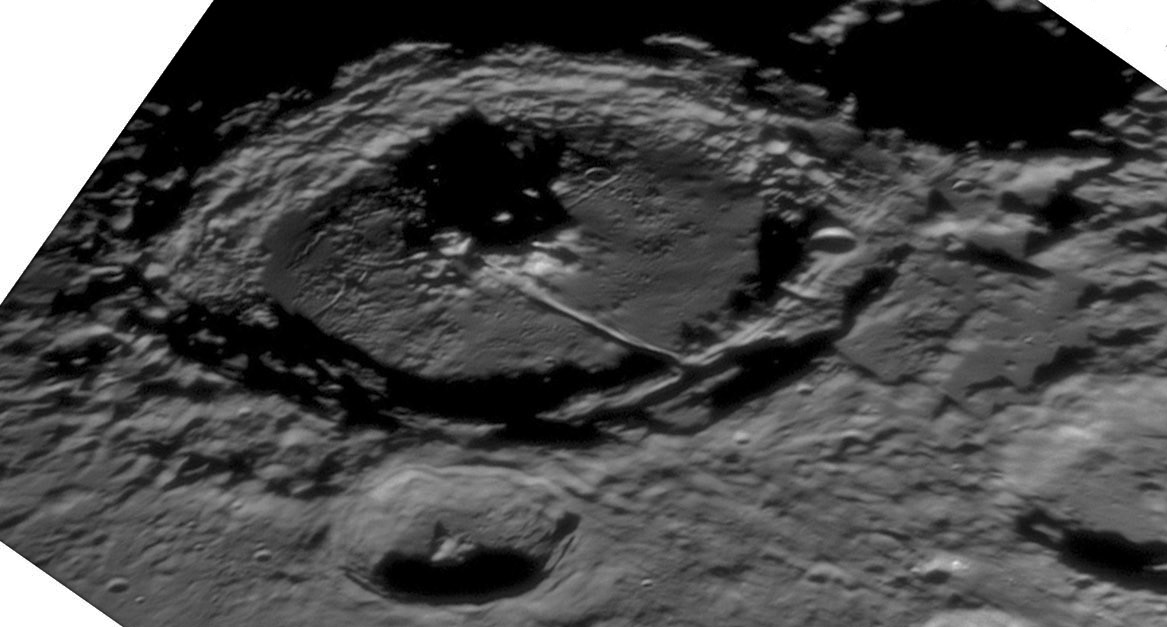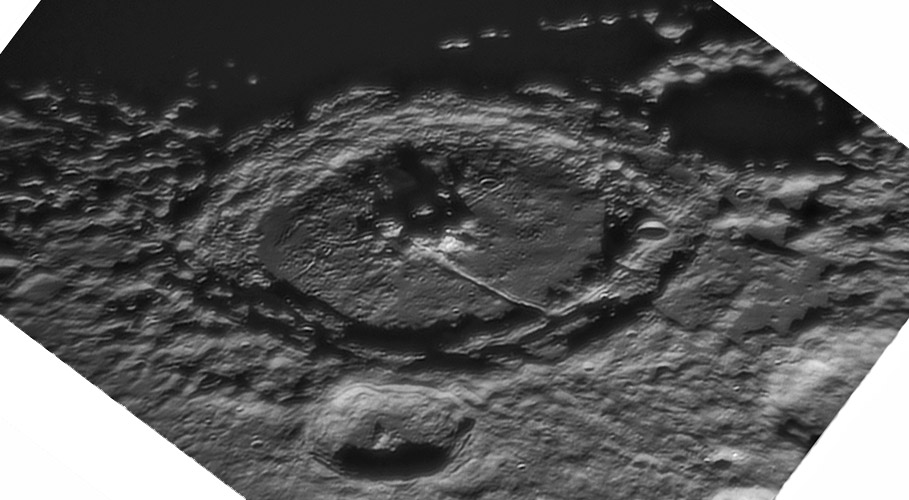July 26, 2013
Excellence Times Two

north to the left image by Luc Cathala, Mazan in Vaucluse in France

north to the left image by Gari Arrillaga, Cambrils, Spain
The first thing you might be tempted to do after looking at these two images is to check the Technical Details below to see if they were taken by LRO. They weren't, they are just from skilled amateurs in France and Spain. Luc's image (top) was taken with a 25" reflector about 70 minutes after Gari's which was taken with his trusty C-11. These are both such excellent images that we can see new things or better appreciate details less visible on most previous images. Before starting on the floor of Petavius, notice the flat ponds of impact melt, mostly to the south but also to the north of Petavius; almost none occurs to the east or west. Jumping inside to the floor, note the slightly elevated ring about 40% of the diameter of Petavius to the south with curved lines of hills, and the feeling that the inside is depressed; Petavius is a transitional structure, part way to being a central peak ring crater/basin. The low lighting shows low elevated edges along some parts of the great trough. The short sinuous rille just north of the central peaks cuts an elongated bulge, presumably lavas that erupted from it. This could be considered a rille-built dome. Another, somewhat odd dome lies against the south wall with a possible collapse pit near its center.
Chuck Wood
Technical Details
Top: 25/07/13 at 2h31 UT. 625 mm (diameter) F/D 4.37 newtonian telescope + barlow 2. Average turbulence. Red filter with a Point grey Flea 3 camera. 70 pictures stacked over 2500 with Autostackker 2 and traited by ondelettes with Registax 6.
Bottom: 25/07/13 at 1h322 UT. C11 ZWOptical ASI 120mm.
Related Links
21st Century Atlas chart 4.
Yesterday's LPOD: Lunar News
Tomorrow's LPOD: Twin Peaks
COMMENTS?
Register, Log in, and join in the comments.



